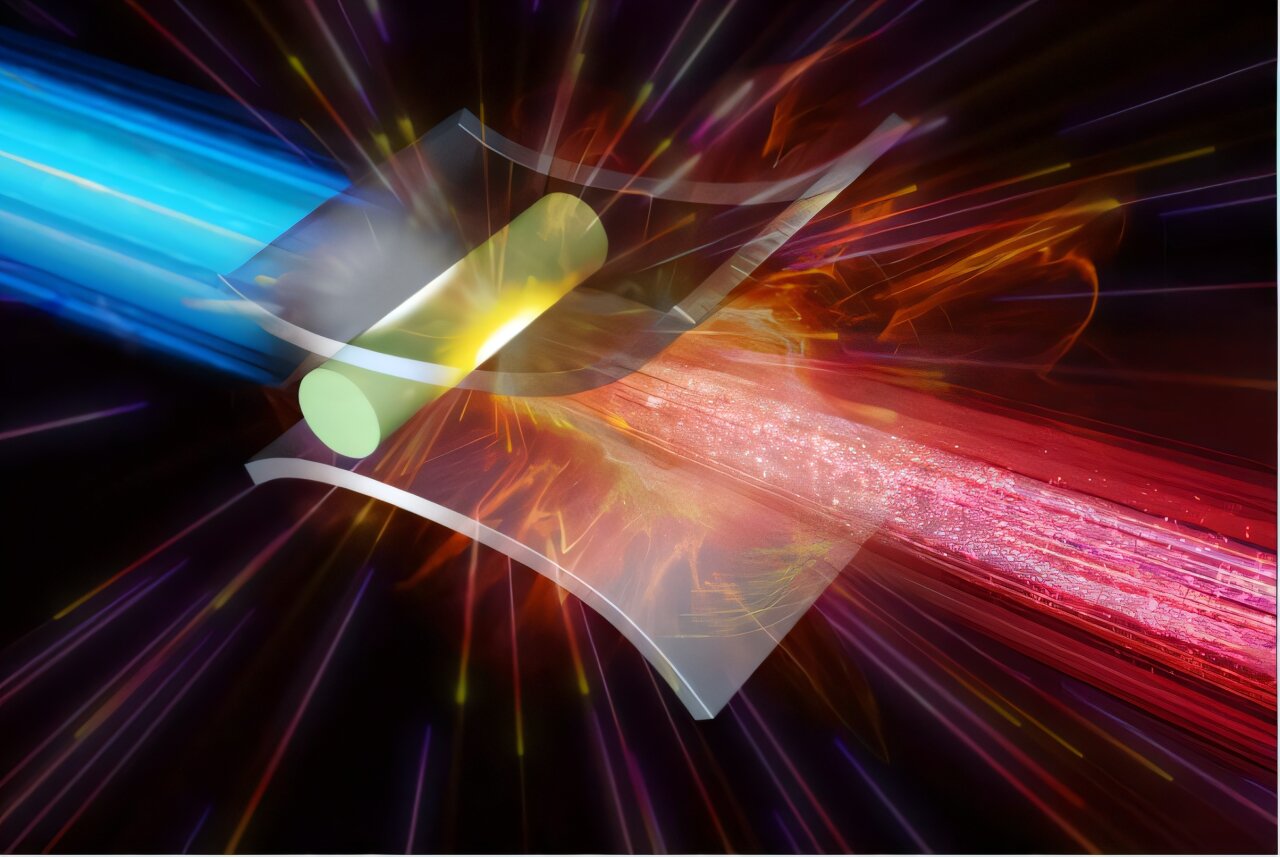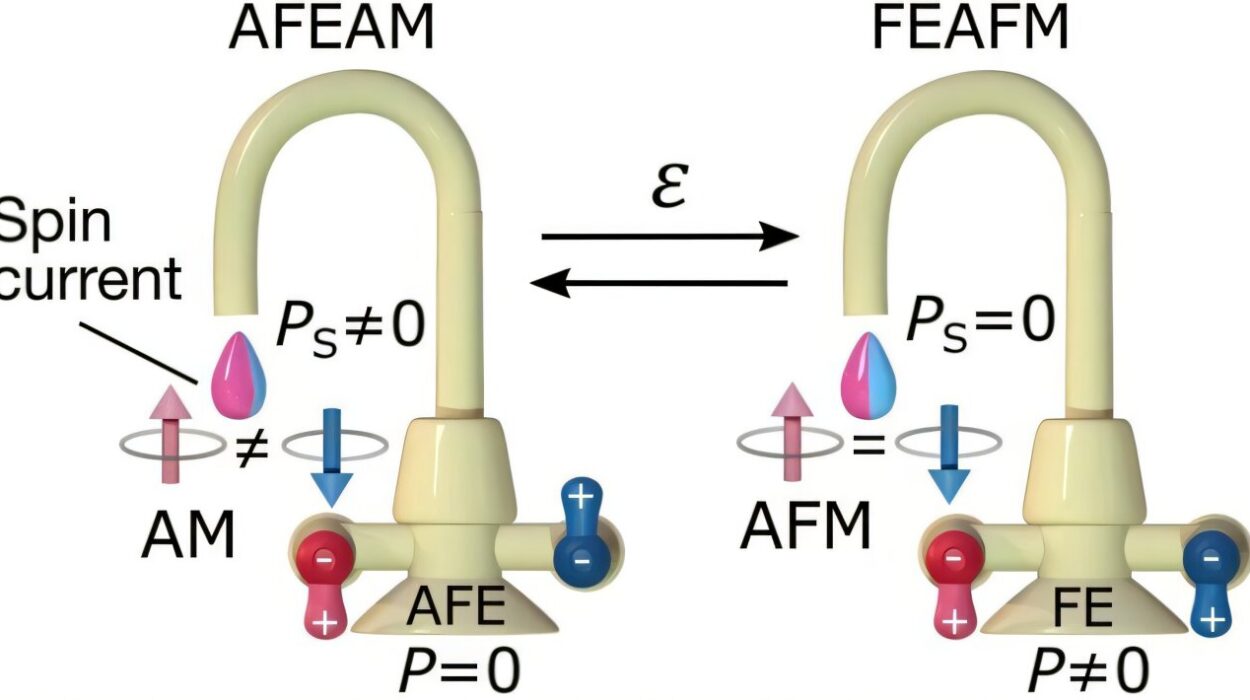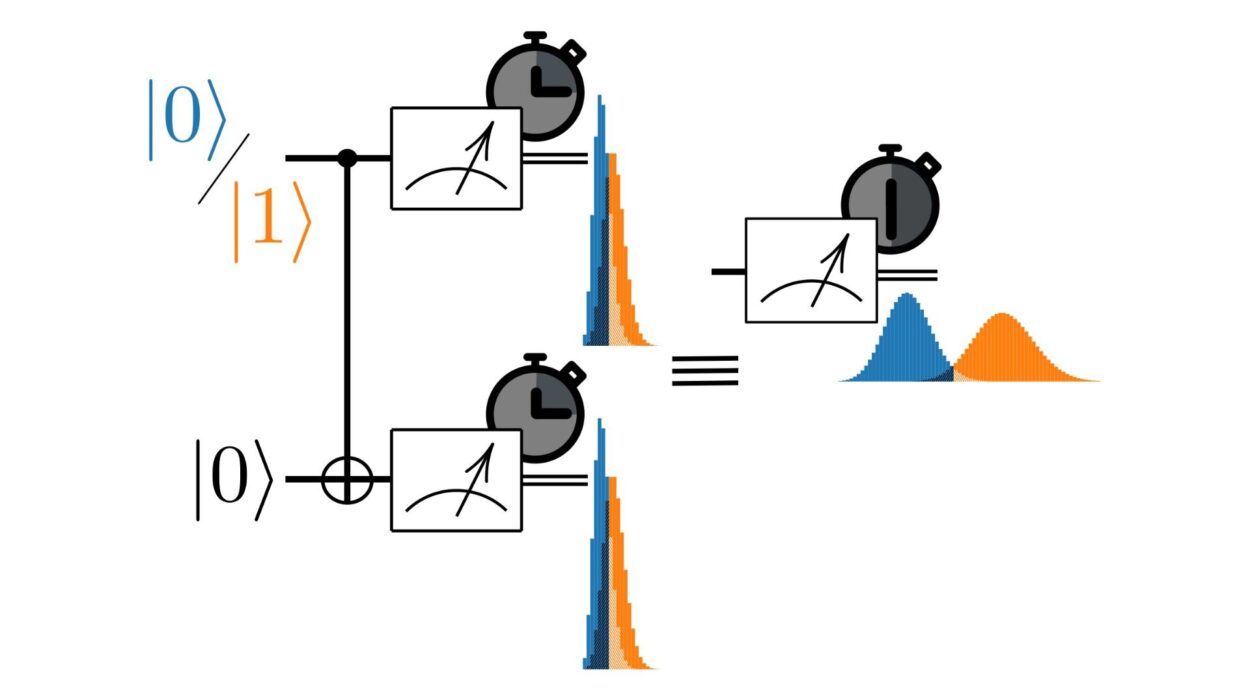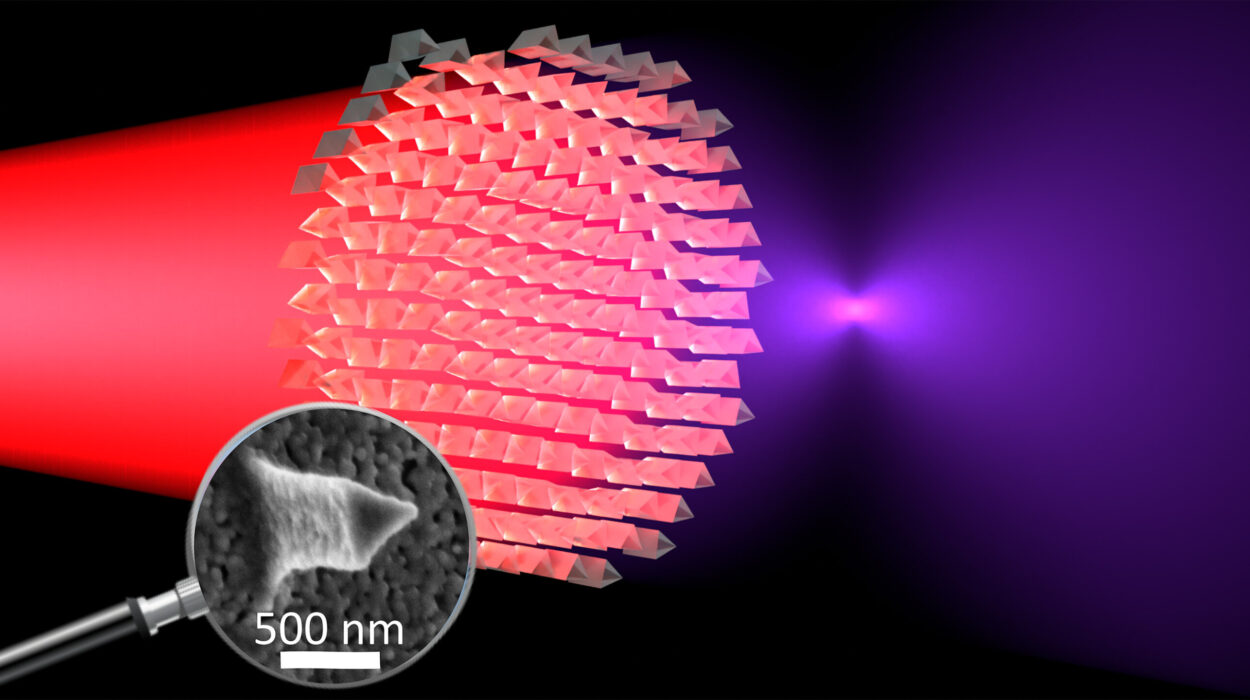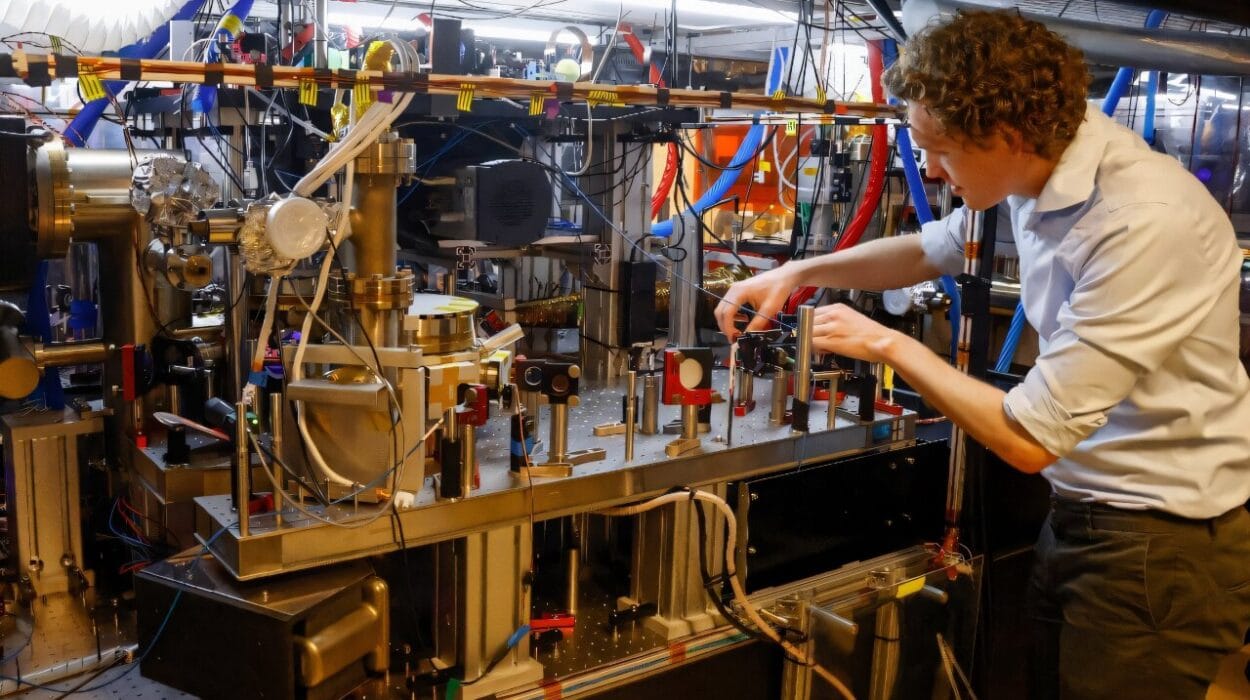For over a century, the dream of hurling subatomic particles to breathtaking energies has been tied to gigantic machines. From the vast tunnels of CERN’s Large Hadron Collider to the towering magnets of the Tevatron, high-energy physics has been a field of epic proportions. But what if the next leap didn’t require larger tunnels or bigger magnets—but smaller nozzles?
In a bold step that defies convention and redefines possibility, scientists at The University of Osaka have unveiled a concept so compact yet so powerful, it could reshape the very architecture of high-energy physics. Under the leadership of Professor Masakatsu Murakami, the research team has introduced micronozzle acceleration (MNA)—a technique that turns a microscopic target into a compact particle accelerator capable of producing giga-electron-volt (GeV) proton beams.
If that sounds implausible, it’s because until now, it was. But thanks to a combination of clever engineering, precise laser manipulation, and world-class supercomputing, this once-unthinkable idea has become a world-first scientific milestone. The achievement, published in Scientific Reports, could ignite revolutions across energy, medicine, and astrophysics—all from within a lab no bigger than a classroom.
Beyond Flat: The Limits of Traditional Laser Acceleration
To appreciate the breakthrough, it helps to understand what the Osaka team is challenging. For decades, laser-based particle acceleration has promised a compact alternative to conventional accelerators. By firing ultra-intense laser pulses onto thin foil targets, scientists hoped to use light itself to accelerate charged particles like electrons or protons.
While this approach has seen remarkable progress, its main bottleneck is energy. Even under ideal conditions, the most common designs hit an energy ceiling of about 100 mega-electron-volts (MeV). That might sound impressive—after all, that’s 100 million electron volts—but it’s still an order of magnitude below what’s needed for practical applications in areas like laser fusion, cancer therapy, or laboratory astrophysics.
Part of the problem lies in the geometry. Flat targets, when hit by high-power lasers, produce powerful but brief electric fields. Protons are accelerated in a quick burst, but the acceleration stops almost as soon as it begins. The result is a wide, messy beam with limited energy and poor focus—fine for proof-of-concept studies but insufficient for real-world use.
That’s where Murakami’s team decided to rewrite the rules.
Introducing the Micronozzle: Engineering at the Edge of Imagination
Instead of sticking with flat targets, the Osaka researchers turned to microengineering, fabricating targets with tiny nozzle-like geometries. Imagine a miniature funnel, barely the width of a human hair, sculpted into a block of material. When a powerful, ultrashort laser pulse is fired into this nozzle, the results are anything but small.
Inside the micronozzle, the laser pulse generates a quasi-static electric field—a sustained and structured force environment that doesn’t collapse immediately. This field behaves like a corridor, directing and accelerating protons through a series of steps rather than a single chaotic burst. Think of it as the difference between a firecracker and a rocket engine: one is explosive but unfocused; the other is sustained and directional.
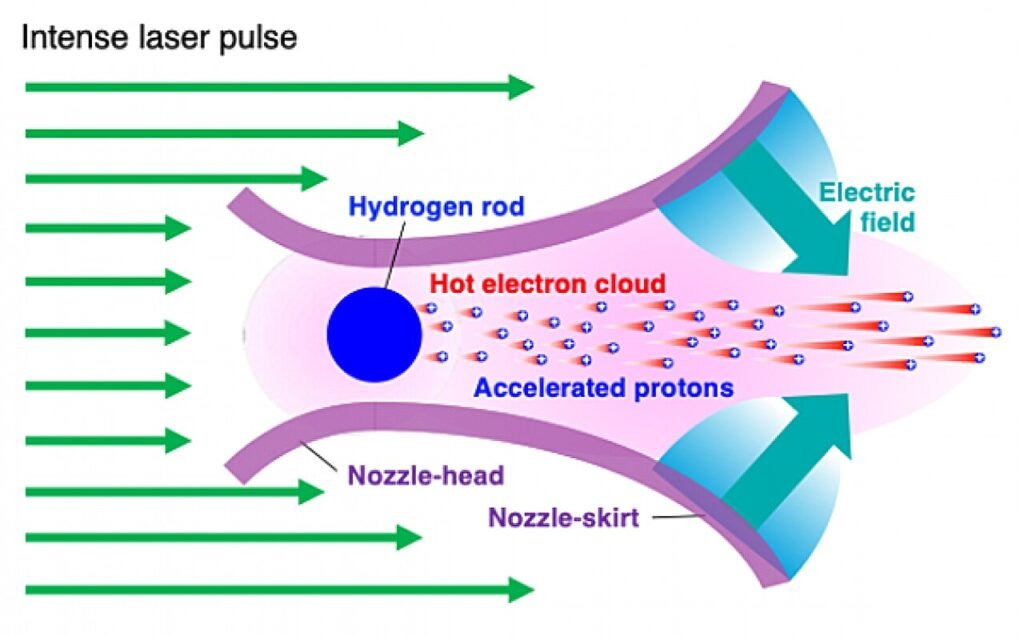
This stepwise acceleration allows the protons to reach energies beyond 1 GeV, more than ten times the traditional limit, and to do so with remarkable beam quality and stability. These aren’t just energetic particles—they’re usable beams, with tight focus and clean profiles, ready for advanced applications.
Most astonishing of all, this was achieved in simulation using a compact setup, not a kilometer-long collider. The implication is profound: high-energy particle physics may soon require lab benches, not supertunnels.
Lasers and Simulations: The Physics Behind the Breakthrough
At the heart of the MNA technique is the interaction between ultraintense, ultrashort laser pulses and the microstructured material. These lasers deliver power in femtoseconds—quadrillionths of a second—with intensities reaching 10¹⁹ watts per square centimeter or higher. When aimed into the micronozzle, the light rapidly ionizes the target material, creating a plasma—a soup of charged particles.
As the laser travels through the narrow nozzle, it drives a complex interplay of plasma dynamics and electromagnetic fields. The constriction of the nozzle does more than just focus the laser—it shapes the electric field in such a way that protons are captured and then accelerated in discrete stages. The structure traps the field inside the nozzle for longer than in flat designs, effectively creating a particle escalator powered by light.
These insights were made possible by advanced numerical simulations on the SQUID supercomputer at The University of Osaka. The simulations used particle-in-cell (PIC) techniques to resolve the motions of individual particles under the influence of rapidly changing fields—requiring enormous computing power and precision. Without these simulations, visualizing and optimizing the MNA process would have been impossible.
The result was a virtual prototype that produced GeV-class proton beams—a theoretical first, yet firmly grounded in physical reality.
Compact Accelerators for a Collapsing World
So why does this matter?
In the realm of energy research, the ability to generate GeV protons in a compact system is a potential game-changer for inertial confinement fusion (ICF). This form of fusion aims to ignite hydrogen fuel using lasers or particle beams. A key variation, known as fast ignition, relies on a second, high-energy beam to initiate the reaction at the critical moment. Traditional accelerators are too bulky and slow for this role. MNA could deliver the needed energy with the precision and compactness required for practical fusion reactors.
In medicine, the implications are equally profound. Proton therapy is one of the most promising treatments for hard-to-reach or radiation-sensitive tumors, such as those near the brain or spine. Unlike X-rays, protons deposit their energy at a precise depth—the Bragg peak—minimizing damage to surrounding tissue. However, current proton therapy machines are enormous and expensive, often costing over $100 million. A compact, laser-driven GeV proton source could dramatically reduce costs and increase accessibility, potentially bringing advanced cancer care to more patients around the world.
And in astrophysics, MNA opens a laboratory window into the cosmos. Many of the universe’s most extreme environments—like neutron stars, gamma-ray bursts, or the magnetospheres of pulsars—involve protons accelerated to GeV or TeV energies under intense magnetic fields. Recreating these conditions on Earth has been largely impossible—until now. With micronozzle acceleration, researchers may soon be able to simulate and study astrophysical processes on a tabletop, unraveling mysteries once thought beyond experimental reach.
Toward the Next Acceleration Revolution
For Professor Murakami and his team, this achievement is not the final word—it’s the first chapter. The simulations, while robust, must now be validated in physical experiments. Building micronozzles with the precision required, aligning them with femtosecond lasers, and measuring the resulting proton beams will take time and ingenuity. But the roadmap is clear.
What’s more, the fundamental principles behind MNA could extend beyond protons. With modifications, the same architecture might be used to accelerate electrons, ions, or even exotic particles. It might inspire new types of beam-based neutron sources, isotope generators, or quantum accelerators. The door that’s been opened doesn’t lead to a single room—it opens onto an entire new wing of high-energy science.
There are challenges, of course. Target fabrication at microscopic scales is a complex art, and aligning lasers with micronozzle apertures requires cutting-edge precision. Thermal effects, beam divergence, and repetition rate all pose engineering hurdles. Yet none of these challenges are showstoppers. In fact, they are exactly the kind of problems that signal the beginning of a new technological domain.
The Shrinking of the Sublime
In some sense, the story of MNA is the story of science itself: the quest to shrink the extraordinary into the achievable. The cyclotrons of the 1930s filled rooms. The synchrotrons of the 1950s filled buildings. The colliders of the 21st century span nations. And yet, thanks to innovations like MNA, the next leap in high-energy science may come not from building bigger, but from thinking smaller—and smarter.
It’s not just a scientific development. It’s a philosophical shift. Where once we built cathedrals to smash atoms, we may now build microscopes that bend them to our will. The laws of nature haven’t changed. But our tools—and our imagination—have.
A Laser, a Nozzle, and the Universe in a Grain of Dust
In the end, what Murakami’s team has achieved is not just an advance in particle physics, but a reinvention of the possible. With laser light and micron-scale geometry, they’ve forged a new path to the stars, not by reaching for them directly, but by simulating their power in miniature.
The micronozzle accelerator isn’t just a new tool. It’s a metaphor for the future of science: precision over power, structure over scale, elegance over excess.
With the right design, even a beam of protons can carry the fire of creation.
Reference: M. Murakami et al, Generation of giga-electron-volt proton beams by micronozzle acceleration, Scientific Reports (2025). DOI: 10.1038/s41598-025-03385-x
